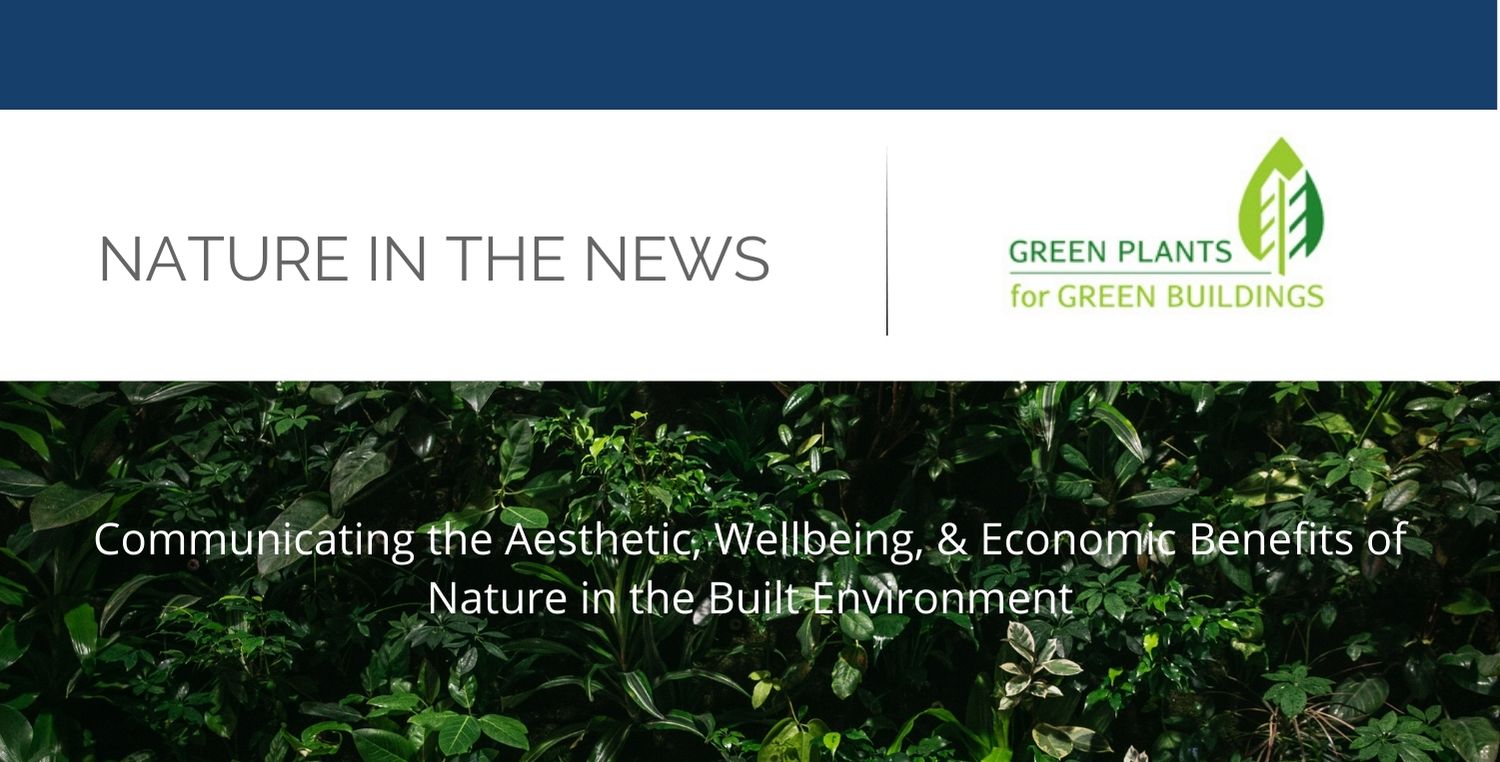
This e-newsletter brings you the latest information and resources on biophilic design, the industry, and GPGB updates.
Offices that Work for the Worker
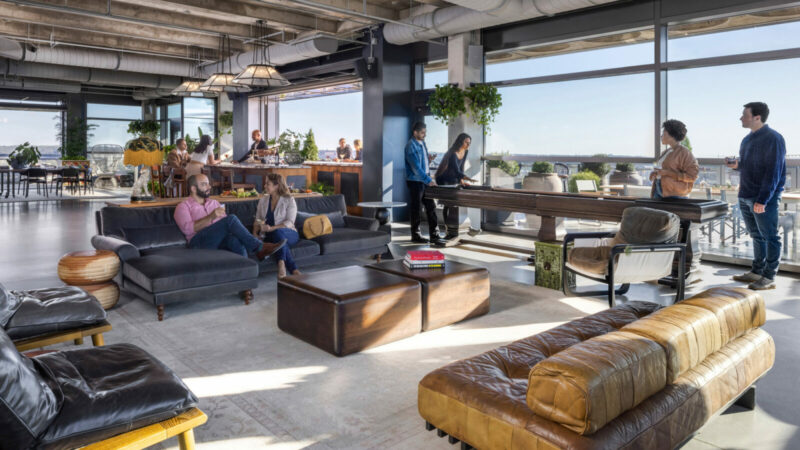
Photo: Gensler: Signal House, Washington, D.C.
No Single Solution Will Save Cities.
Three Just Might.
February 08, 2023 | By Andy Cohen
Excerpt: The pandemic challenged assumptions, changed peoples’ priorities, and unlocked new ways of working. Most of all, it underscored the value of human interaction, and the way that space is critical to shaping experience.
Together, these facts mean that the needs of workers and the very nature of work has changed. If people are to come to the office, they’re coming because it’s a destination, not an obligation. They’re coming for the experiences that they can’t have anywhere else, through state-of-the-art technology, compelling amenities, and people-centered design.
“Having less access to work resources and feeling less connected to company culture ranked among the top disadvantages of hybrid work,” Taylor Telford reported in the Washington Post last fall, prompting many companies to revamp their offices and place greater focus on shared space and team building. The Gensler Research Institute’s Workplace Survey supports this idea, while also revealing that people prefer the office for deep focus work.
So how can workplace design support this? By creating choice in environment. The workplace should be flexible, agile, and adaptable to the changing needs of workers, with a variety of spaces suited to different tasks. From small, 2-3 person conference rooms with integrated technology for seamless hybrid collaboration, to living room–like “neighborhood” areas, where teams can gather to ideate, socialize, or comfortably engage in independent work, the well-designed office can give people the autonomy and support they need to do their best work.
Sustainable Future Podcast:
Better Buildings through Biophilic Design
Better Buildings through Biophilic Design
In this episode, Steven Peck, the host of the Sustainable Futures Podcasts sits down with designer and consultant Bill Browning to discuss the science and practice of biophilic design and how it can influence and affect our interaction with the world around us. Human beings have a strong affinity for the natural world, which green infrastructure and nature based design practices can be a powerful and cost effective mechanism to enhance our constructed spaces and quality of life. Join us for a conversation on the powerful impacts natural systems can have on our brain chemistry and psychology and the implications that has for how we consider and design our spaces.
Guest

Bill Browning
Terrapin Bright Green
Bill Browning is one of the green building and real estate industry’s foremost thinkers and strategists, and an advocate for sustainable design solutions at all levels of business, government, and civil society. His expertise has been sought out by organizations as diverse as Fortune 500 companies, leading universities, non-profit organizations, the U.S. military, and foreign governments. In addition to consulting, Bill writes and lectures widely on sustainable design and building practices.
Host

Steven Peck, GRP, HASLA
Green Roofs for Healthy Cities
Steven spearheaded the first green roof demonstration project on Toronto City Hall 20 years ago and the mandatory green roof policy in Toronto a decade ago. This innovative policy has resulted in more than 6 million additional square feet of green space across the city. Due to Steven’s work, GRHC has helped to win green roof policy victories in San Francisco, Washington, DC; Portland, Oregon; and Denver, Colorado. Steven also founded Green Infrastructure Ontario coalition to bring together organizations that share an interest in the protection and development of green infrastructure in Ontario. In 2007 he co-founded the World Green Infrastructure Network, an international organization that promotes the use of green infrastructure around the world.
Fitwel & EVORA Global Launch ‘Social Performance’

CANNES, FRANCE; March 11, 2024 – Fitwel®, the global healthy building certification and data insights platform, launched phase two of its groundbreaking new solution that, for the first time, quantifies Social performance by overlaying health research and financial data to identify strategies that have the greatest impact on stakeholders and asset value. Phase one was successfully piloted last year in collaboration with sustainability advisor, EVORA Global, enlisting an exclusive first cohort of some of the largest commercial real estate owners and asset managers worldwide. This portfolio-scale certification pathway has proven to be essential for substantiating “S” data for real estate, addressing the growing demand – driven by both investors and forthcoming regulations – for a rigorous and standardized approach to integrate “Social” metrics, including health and wellbeing measures, into ESG reporting. Social Performance by Fitwel will receive recognition by GRESB for 2024 reporting.
First introduced in 2023 under the name Certified Metrics, Social Performance by Fitwel realizes the potential for an entity-wide ESG solution by offering a complimentary pathway to Fitwel’s asset certification, effectively addressing a prominent market gap. Together, the existing asset-level certification and Social Performance provide 100% portfolio assessment, allowing asset managers and investors to:
- Generate portfolio-wide insights for social and material risk;
- Optimize asset performance by generating gap analysis based on S criteria;
- Report on goal-based performance with third-party certified data;
- Compare performance to industry peers;
- Include all assets in certification assessments.
Fitwel has begun rolling out Phase 2 of Social Performance. For more information and to become an early adopter, visit fitwel.org/socialperformance.
Congratulations to GPGB Hero Supporter, Ambius

GPGB thanks Ambius for their continued support!
This year, Ambius has graciously “leveled-up” support to the Biophilic Hero level. Doing so, has given GPGB even more opportunities to educate professionals on the benefits of nature.
Green Plants for Green Buildings is a plant advocacy non-profit dedicated to putting nature in every room. The primary way we do this is by communicating the aesthetic, wellbeing and economic benefits of plants to designers, architects and building managers who specify plants.
Our toolbox? Compelling presentations made at national conventions of building professionals, a growing library of research archives, (8) one-hour continuing education programs (CEU) and a number of Registered Trainers located all across the United States who present these CEU programs to building professionals.
Ambius is honored to help create a vibrant and sustainable future for our industry, together.
Join GPGB in congratulating Ambius on all the 2024 International Plantscape Awards.
GPGB Registered Trainer Program

Become a Registered Trainer — Step 1
Your organization must be a GPGB Supporter at the Biophilic Advocate level or greater for you to become a Registered Trainer. Not sure? Search for your company in our Provider Directory.
Become a Registered Trainer — Step 2
Each Registered Trainer will have a separate account in addition to the main Supporter account. This allows us to track courses and certification for individual trainers. You will create your Registered Trainer account in Step 3.
Become a Registered Trainer — Step 3
Complete the form online and pay the annual credentialing fee of $250 per Registered Trainer that is required to present GPGB CE programs. Each Registered Trainer has a unique login, so please use a different email address from the one used to log in to your organization’s primary account.
This annual fee is used to maintain the credentialing of existing courses with our credentialing organizations, to develop additional courses, and to provide you with support throughout the year.
Once your Registered Trainer sign up is complete, you will receive an email at the address you used to register with your new Registered trainer login credentials and the link to our course selection page to choose and purchase your courses.
Each course costs $225.00.
Bundle and save on ALL courses for $495.
Become a Biophilic Enthusiast, Star, Champion, or Hero supporter to receive unlimited access to GPGB slide decks and free registered trainer(s).
View Supporter Summary Level.
Continuing Education Programs:
-
Green Roofs
-
Living Walls
-
Authentically Green Interiors
-
Economics of Biophilic Design
-
Moss Walls
-
Advanced Living Walls with Case Studies
-
Biophilic Design in Fitwel, the WELL Building Standard, & the Living Building Challenge
-
How to Specify Living Green Walls
Please contact admin@gpgb.org if you have any questions
Congratulations to GPGB’s Top Three
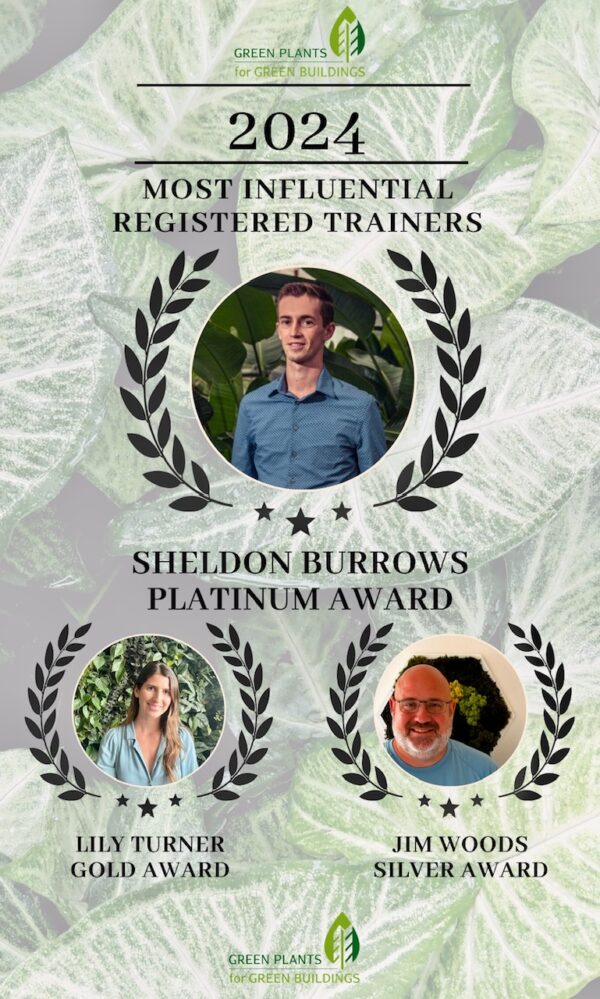
Sheldon Burrows with Green Oasis in San Antonio, Texas had hundreds of attendees at his GPGB CEU presentations in 2023. He was on his honeymoon and unable to accept the Platinum Award in person. The Gold Award went to Lily Turnerwith Urbanstrong in Brooklyn, New York. Lily had nearly 150 attendees and continues to be one of GPGB’s most influential registered trainers. Jim Woods with GrowUp Greenwalls in Vista, California has earned the Silver Award for having nearly 100 attendees at his presentations this past year. He has been one of GPGB’s Most Influential Trainers for years. All three winners can attest to the benefits of the Registered Trainer Program.
Our seminars will give you the necessary credentials, training, and authority to get in front of architects, landscape architects, designers, building owners and manager, as well as LEED APs to educate them about the many health and productivity benefits of plants in our built environments.
GPGB provides you with content-rich slide decks, scripts, and whitepapers for our Continuing Education presentations on popular design topics such as living walls, green roofs, authentically green interiors, biophilic design, and moss walls.
No prior teaching or speaking experience is required – only a passion for plants.
Educate: GPGB is an approved education provider for AIA, IDCEC, ASID, BOMI, USGBC.
Advocate: Support your industry by communicating the aesthetic, wellbeing, and economic benefits of nature in the built environment.
Empower: Empower designers, architects, and building professionals to explore their connection with nature through interior design.
What will set you apart?
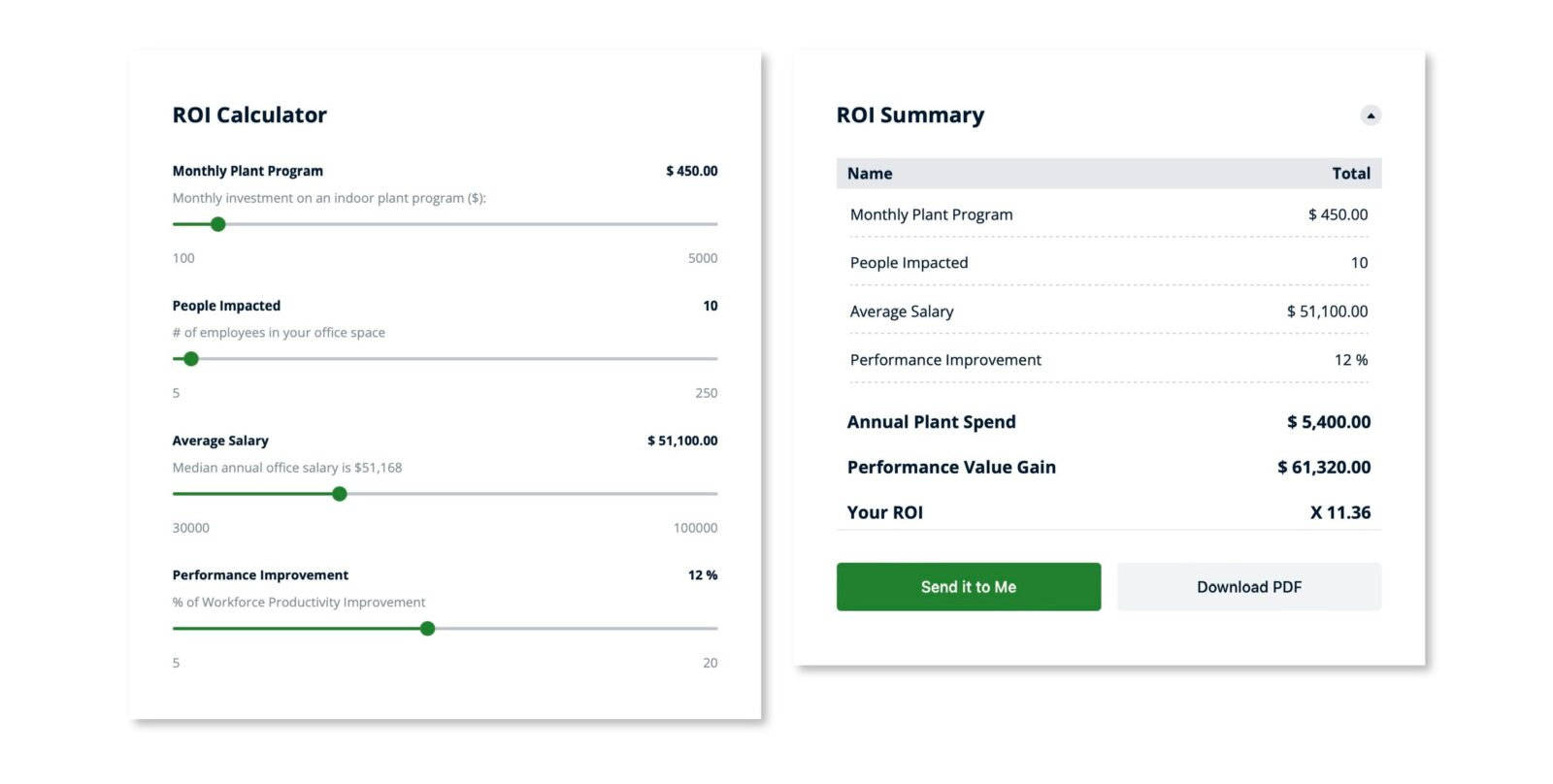
ROI Calculator
The built environment matters more today than ever before. With developers, office managers, and the hospitality industry scrambling for ways to entice people back into their space, your knowledge of nature and being able to explain and incorporate biophilic design into the built environment is critical.
For employers, healthy offices can improve employee satisfaction, decrease absenteeism, and reduce turnover. Millennials, who will soon become the largest workforce cohort, overwhelmingly desire healthy workplaces – 78% believe workplace quality is a deciding factor in a job search, with 69% willing to trade other benefits for better workplaces.
New GPGB Enhanced Supporter Levels and Features
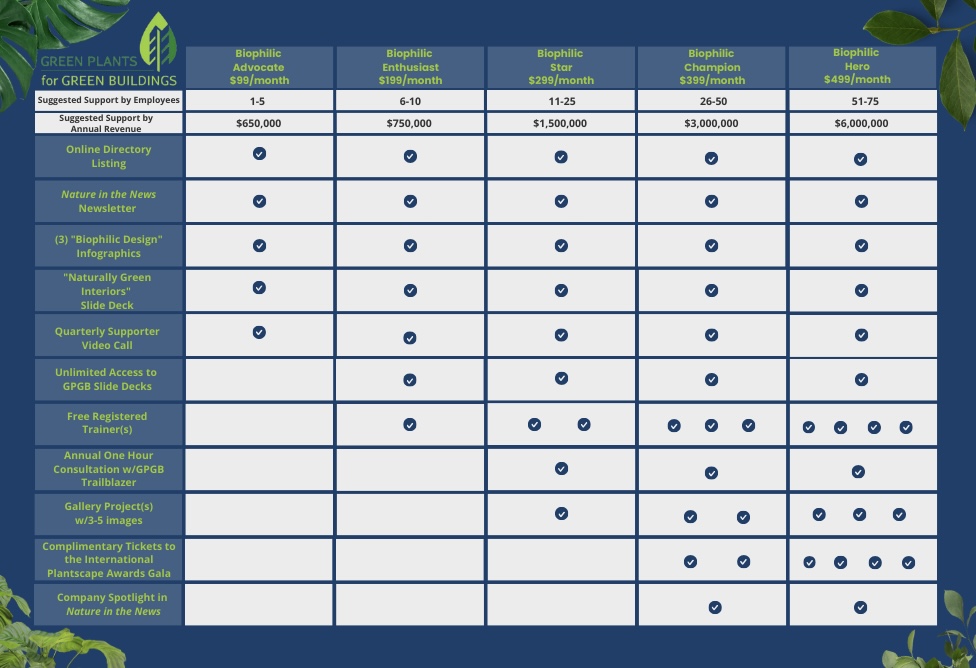
A GPGB Board Member will be reaching out to you to discuss your options.
CLICK HERE to renew and/or “LEVEL-UP TODAY!
Volunteers Wanted for Committees and Board of Directors
GPGB depends on the work of volunteers to carry out our strategic initiatives and fulfill our mission. Serving on a committee or as a GPGB board member is a rewarding experience and an opportunity for personal and professional growth. If you can make a minimum two-year commitment, the industry needs people like YOU! We are actively looking for committee members and board members who are passionate about biophilia.
Once you have completed a minimum of one (1) two-year term on a GPGB committee, you are eligible to be considered to serve on the GPGB Board of Directors. If you have already served at least two-years on one or more GPGB committee(s), please fill out the Board of Directors section to be considered.
Committees include:
-Marketing & Communications
-Supporter Development
-Education & Professional Development
All are driven by our Strategic Plan.
Thank You to Our Supporters!
GPGB is making a difference and it’s all thanks to our valued supporters. Our supporter’s participation and contribution is greatly appreciated not only by us, but by everyone in the industry.
Thank you for continuing to add your voice to the hundreds of other industry professionals committed to integrating plants into our built environments. We appreciate your understanding and willingness to “Level-Up” this year!
A huge thank you to Ambius, NewPro Containers, and Foliage Concepts.
The contributions from these three companies have made them GPGB Biophilic HEROES and we truly could not do this without you!
Biophilic Gallery
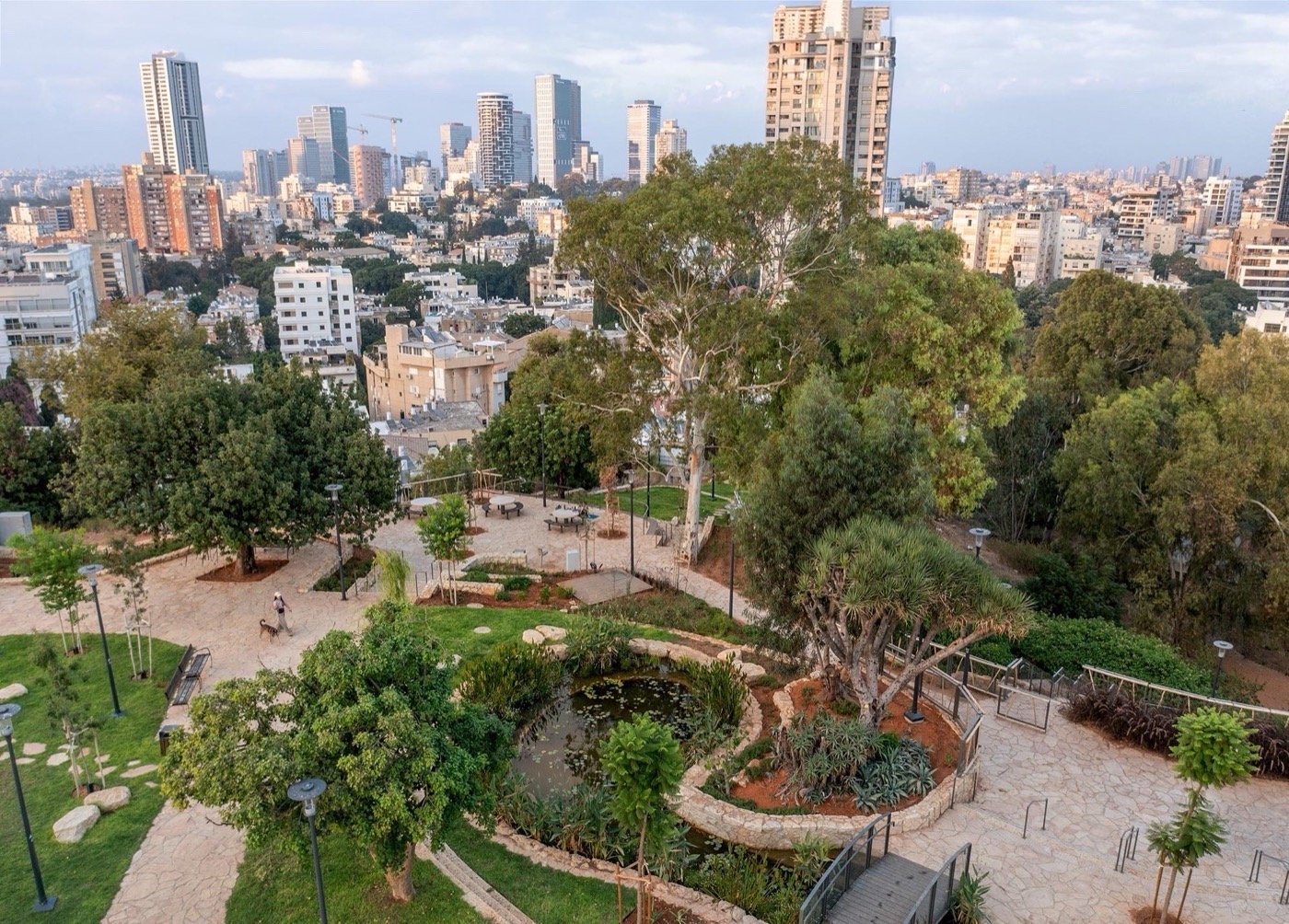
Shaul Park
Designed by BO Landscape Architecture
Location: Israel Type: Cultural Heritage / Parks / Playgrounds / Water features
Built: 2023 / Show on Google Maps / Published on December 3, 2023
Photo and Credits: Landezine
“The garden was installed with a predetermined plan in mind, tailored to the area and the general natural landscape. On entering the garden, there is a lush carpet of green grass shaped like a pretty hill. Groups of natal plum shrubs are planted in its corners, pruned into the dome-like shape of the grassy hill. Beyond it, another grassy area, straight and angular, containing three flower beds, one of them with beautiful rose bushes, prominent in their abundance of flowers. The rest of the flower beds contain seasonal flowers. In the eastern border of the land there are cattail plants adorning a decorative pond hidden in rich multihued vegetation. A clear brook erupts from a split rock and trickles in a lively stream and pleasant gurgle into winding rock channels. The stream is swallowed and resurfaces between the rocks, and eventually falls into the quarried pond. The two shores of the pond are connected by a decorative stone bridge. The garden contains a cactus area that is built with local stones for complete harmony with the place.”
Description by landscape architect Moshe Kvashni, from the Ramat Gan Municipality’s 1937 Council Report
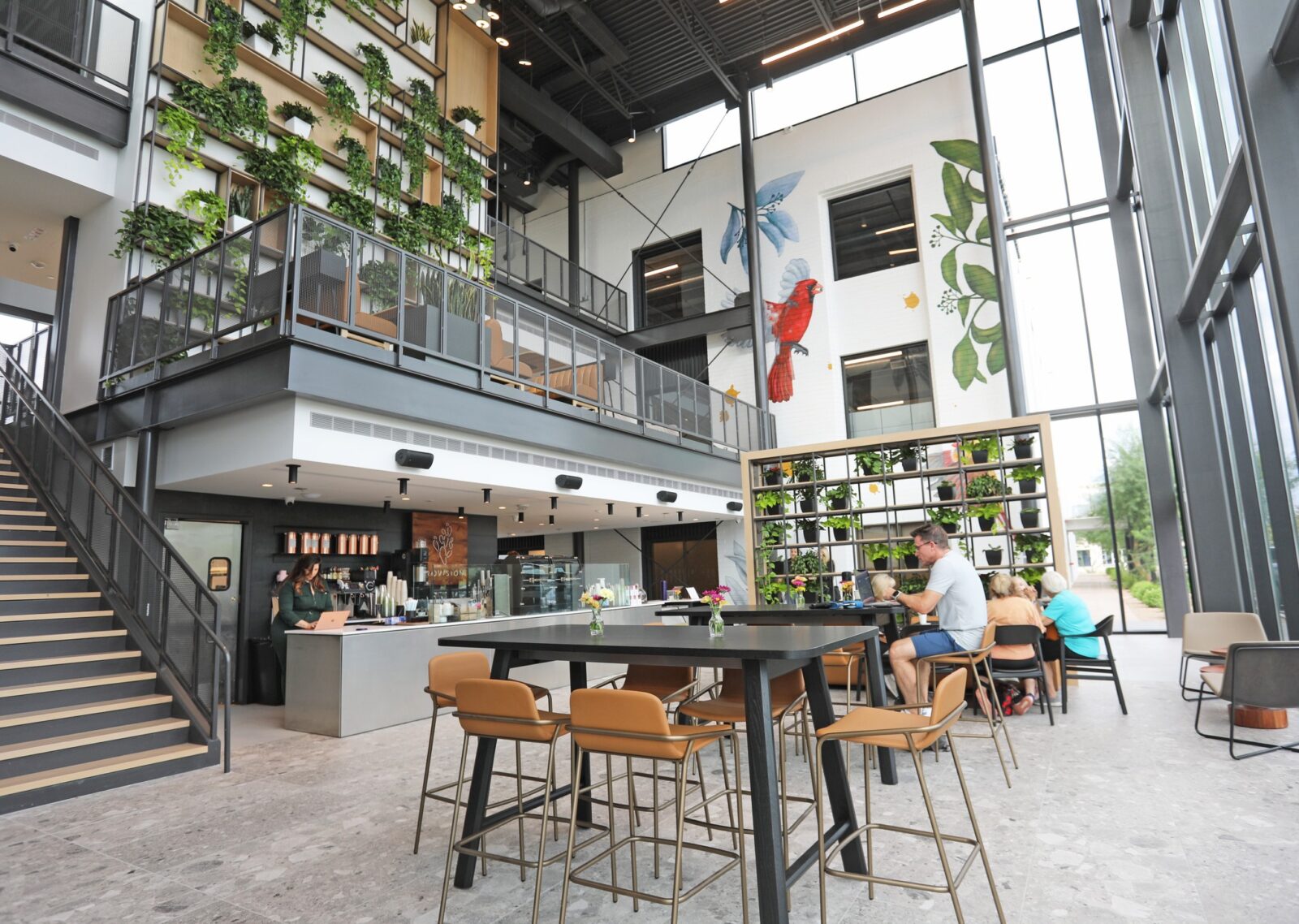
Wespac recently completed a unique retail and restaurant build-out for specialty coffee roaster, cocktail bar, and eatery’s second Valley location, Provision Coffee.
Exclusive elements of this 1,682 SF, multi-story eatery included a 2-story live plant wall with a floor-to-ceiling glass atrium and natural wood finishes.
Located in #uptownphoenix, Provision is the feature of a 3-story glass atrium lobby that links its two adjacent office buildings together. With three floors of open space, a full-service patio, and full cocktail bar with 12 taps, Provision will be the ideal destination to relax, work, or socialize.
Photo and Credits: Wespac Construction Inc. Facebook
Want to Help Keep Nature in the News?
 Everything we accomplish happens because people like you are stepping forward and supporting GPGB’s focus on having conversations with the building professionals who can #BringNatureIndoors.
Everything we accomplish happens because people like you are stepping forward and supporting GPGB’s focus on having conversations with the building professionals who can #BringNatureIndoors.
If the spirit moves you, please consider supporting our work by making a donation.
